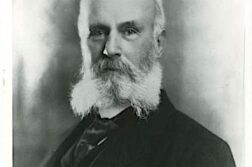WHEN HAS SOMEONE truly “made it” as a writer? When he or she is included in an authoritative anthology, of course. Such an anthology answers the question, “Who were the most important writers of a given age?” For the millions of current and ex-students whose primary engagement with literature is a required survey class, anthologies are what literature is. These tomes float from dorm room to home library, proof that their owner is an educated person. You were wondering whether I knew 17th-century Spanish poetry? There’s the anthology on the third shelf.
When the time came for me to choose a text to teach for my first survey course, I took the selection process very seriously. I vaguely knew that there were two primary anthologies for the 20th century—The Norton Anthology of American Literature, which I assumed would be old-fashioned, and The Heath Anthology of American Literature, which I understood to be the “cool” alternative. “I hear the Heath is more diverse,” advised a professor who had been in my dissertation group. “Much better than the Norton,” affirmed a colleague. As I was going to teach a class in American literature after World War II, and as a broad range is particularly important with recent literature because the canon is so unsettled, I tentatively decided on the Heath. But when I got my desk copy, I was appalled.
The Heath Anthology is in fact impressively diverse.






